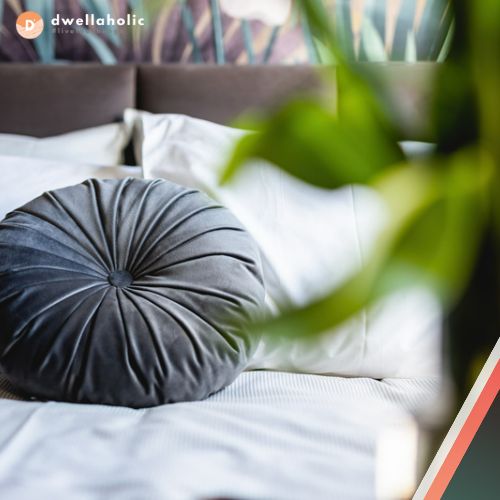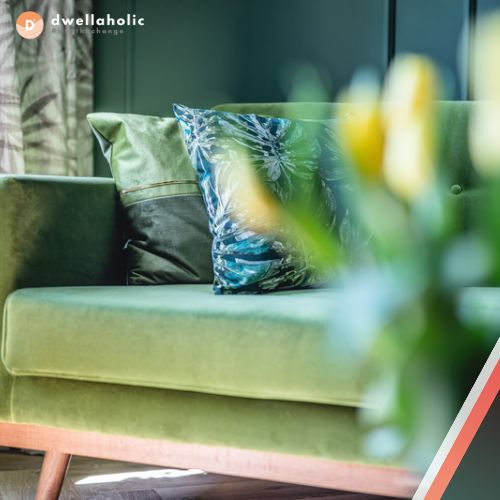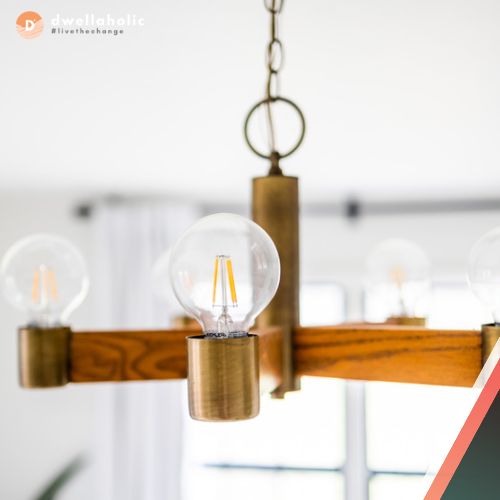Table of Contents
Introduction

Hello, Dwellaholics! If you are planning to sell your home in Singapore, you might be wondering how to make it stand out from the crowd and attract more buyers. Home staging is a proven technique that can help you showcase your property’s best features and create a lasting impression on potential buyers. Home staging involves preparing your home for sale by decluttering, cleaning, decorating and arranging furniture in a way that enhances its appeal and functionality. In this article, we will share with you five expert tips for home staging in Singapore that can help you sell your home faster and for a higher price. Let’s get started!
Tip 1: Declutter and Depersonalize
One of the most important steps in home staging is to declutter and depersonalize your space. Why? Because you want to make your home look spacious, clean and inviting, not cramped, messy and cluttered. You also want to help potential buyers imagine themselves living in your home, not feel like they are intruding on your personal life. So, what does decluttering and depersonalizing entail? Here are some tips:

- Get rid of anything you don’t need or use. This includes clothes, books, magazines, toys, knick-knacks, papers, etc. Donate, sell or throw away anything that is taking up space and collecting dust. You’ll be surprised by how much more room you’ll have once you clear out the clutter.
- Pack away anything that is too personal or sentimental. This includes family photos, trophies, awards, diplomas, religious items, collections, etc. You don’t want to distract buyers with your personal belongings or make them feel uncomfortable with your preferences. You want them to focus on the features and benefits of your home, not your hobbies and history.
- Organize and store everything neatly. Once you have decluttered and depersonalized your space, make sure everything is organized and stored neatly. Use boxes, baskets, bins and labels to keep things in order and out of sight. Store them in closets, cabinets, drawers or under the bed. Avoid piling things on the floor, on the counters or on the furniture. A tidy and orderly home will give buyers a sense of calm and comfort.
Decluttering and depersonalizing your home will not only make it look more appealing to buyers, but also make it easier for you to move when the time comes. Trust us, it’s a win-win situation!
Tip 2: Deep Clean
Another essential step in home staging is to deep clean your home from top to bottom. Why? Because you want to make your home look fresh, hygienic and well-maintained, not dirty, dingy and neglected. You also want to eliminate any unpleasant odors, stains or marks that might turn off buyers. So, what does deep cleaning entail? Here are some tips:

- Hire a professional cleaner or do it yourself. If you have the budget and the time, hiring a professional cleaner can save you a lot of hassle and ensure a thorough job. However, if you prefer to do it yourself, make sure you have the right tools and products for the task. You’ll need a vacuum cleaner, a mop, a broom, a dustpan, a duster, a microfiber cloth, a sponge, a scrubber, a spray bottle, a bucket, a trash bag and some cleaning agents.
- Clean every room and every surface. Start from the top and work your way down. Clean the ceilings, the walls, the windows, the doors, the floors and everything in between. Pay attention to the details and don’t skip any corners. Clean the kitchen appliances, the bathroom fixtures, the light fixtures, the switches, the outlets, the vents, the fans and anything else that might catch the eye of buyers. Don’t forget to clean the outside of your home as well, such as the porch, the driveway, the garage and the garden.
- Remove any bad smells or sources of odor. Nothing can ruin a buyer’s impression of your home more than a bad smell. Whether it’s from pets, food, smoke or mold, you want to get rid of it as soon as possible. Use baking soda, vinegar or lemon juice to neutralize odors and freshen up your home. You can also use candles, diffusers or air fresheners to add some pleasant scents to your home. However, don’t overdo it or use too many different fragrances at once. You want to create a subtle and natural aroma that is not overpowering or artificial.
Tip 3: Create a Neutral Color Palette
Another important step in home staging is to create a neutral color palette for your home. Why? Because you want to make your home look bright, spacious and modern, not dark, cramped and outdated. You also want to appeal to a wide range of buyers, not limit your options with your personal taste. So, what does creating a neutral color palette entail? Here are some tips:

- Paint your walls and ceilings with light and neutral colors. This includes shades of white, beige, gray, cream or tan. These colors will reflect more light and make your rooms look bigger and brighter. They will also create a blank canvas that will allow buyers to envision their own style and personality in your home. Avoid using bold or dark colors that might make your rooms look smaller or gloomier. They might also clash with the furniture or accessories of buyers or make them feel unwelcome or uncomfortable.
- Choose furniture and accessories that complement your color scheme. Once you have painted your walls and ceilings, you can add some furniture and accessories that match or contrast with your color scheme. For example, you can use wood, metal or glass pieces to add some warmth, texture or shine to your space. You can also use pillows, rugs, curtains or artwork to add some pops of color or pattern to your space. However, don’t go overboard or use too many different colors or styles at once. You want to create a harmonious and cohesive look that is not too busy or distracting.
- Consider the mood and function of each room. While you want to create a neutral color palette for your home, you don’t want to make it look bland or boring. You want to create some variety and interest that will suit the mood and function of each room. For example, you can use warmer colors for the living room and the dining room to create a cozy and inviting atmosphere. You can use cooler colors for the bedroom and the bathroom to create a calm and relaxing atmosphere. You can also use brighter colors for the kids’ room or the home office to create a fun and energetic atmosphere.
Tip 4: Furniture and Decor
Another crucial step in home staging is to arrange your furniture and decor in a way that enhances your home’s appeal and functionality. Why? Because you want to make your home look comfortable, stylish and practical, not crowded, outdated or impractical. You also want to highlight your home’s best features and minimize its flaws. So, what does arranging your furniture and decor entail? Here are some tips:

- Use the right size and quantity of furniture. This means choosing furniture that fits the scale and proportion of your rooms. You don’t want to use furniture that is too big or too small for your space. You also don’t want to use too much or too little furniture for your space. You want to create a balance and a flow that will allow buyers to move around and appreciate your space. Avoid using furniture that blocks the windows, the doors, the pathways or the focal points of your rooms. Avoid using furniture that is worn out, damaged or mismatched.
- Arrange your furniture in a functional and attractive way. This means placing your furniture in a way that suits the purpose and the layout of your rooms. You want to create zones and groups that will define the function and the mood of your rooms. For example, you can create a conversation area in the living room with a sofa, a coffee table and some chairs. You can create a dining area in the kitchen with a table and some chairs. You can create a sleeping area in the bedroom with a bed, a nightstand and a lamp. You can also use rugs, plants or screens to separate or connect different areas of your rooms.
- Add some decor and accessories to personalize your space. This means using some items that will add some color, texture, pattern or personality to your space. You can use pillows, throws, curtains, artwork, mirrors, lamps, candles, books, vases or baskets to accessorize your space. However, don’t use too many or too few items for your space. You want to create some interest and charm that will catch the eye of buyers. Avoid using items that are too personal or too generic. Avoid using items that are too flashy or too dull.
Arranging your furniture and decor in a way that enhances your home’s appeal and functionality will not only make it look more attractive to buyers, but also make it more enjoyable for you to live in.
Tip 5: Lighting
The final step in home staging is to optimize your lighting in your home. Why? Because you want to make your home look bright, warm and inviting, not dark, cold and unwelcoming. You also want to create a mood and an ambiance that will suit each room and each time of the day. So, what does optimizing your lighting entail? Here are some tips:

- Use natural light as much as possible. This means opening your curtains, blinds or shutters and letting the sunlight in. Natural light will make your rooms look bigger, brighter and more cheerful. It will also show off your colors, textures and patterns better. Natural light will also save you energy and money on your electricity bills. Avoid blocking your windows with furniture, plants or other items. Avoid using heavy or dark curtains that might make your rooms look gloomy or stuffy.
- Use artificial light as needed. This means using lamps, ceiling lights, wall lights or candles to supplement or enhance your natural light. Artificial light will make your rooms look cozy, romantic and elegant. It will also create a contrast and a drama that will highlight your focal points and features. Artificial light will also help you adjust the brightness and the temperature of your rooms according to the occasion and the season. Avoid using too much or too little artificial light for your rooms. Avoid using harsh or dim artificial light that might make your rooms look unflattering or depressing.
- Use different types and sources of light. This means using a combination of ambient, task and accent lighting to create layers and dimensions in your rooms. Ambient lighting is the general lighting that provides overall illumination and visibility in your rooms. Task lighting is the specific lighting that provides focused illumination and functionality in your rooms. Accent lighting is the decorative lighting that provides interest and personality in your rooms. Avoid using only one type or source of light for your rooms. Avoid using lighting that is too uniform or too random for your rooms.
Optimizing your lighting in your home will not only make it look more appealing to buyers, but also make it more comfortable and enjoyable for you to live in. Trust us, it’s a bright idea!
Conclusion
Home staging is a powerful technique that can help you sell your home faster and for a higher price in Singapore. By following these five expert tips, you can transform your home into a desirable and attractive property that will impress and persuade potential buyers. Home staging is not only beneficial for your home sale, but also for your personal satisfaction and well-being. You can enjoy living in a beautiful and comfortable home that reflects your style and personality. Home staging is not a difficult or expensive process, but a fun and rewarding one. You can do it yourself or hire a professional home stager to help you. Either way, you will be amazed by the results and the feedback you will get from buyers. So, what are you waiting for? Start home staging today and get ready to sell your home like a pro!
How Dwellaholic Can Help You Create Your Dream Space with Our ID Expertise

Residential Design Expertise Dwellaholic specializes in creating stunning and functional residential designs that cater to your specific needs and preferences. They’re committed to transforming your space into a comfortable and stylish haven, making it the perfect spot for relaxation and enjoyment.
Commercial Design Skills Aside from residential projects, Dwellaholic also excels in commercial design. Their team of experts understands the unique requirements and challenges of designing for businesses, and they’re dedicated to crafting spaces that are both visually appealing and highly efficient.
Tailored Solutions Dwellaholic takes the time to truly understand your design needs, ensuring that every solution is tailored to your specific requirements. They believe in creating unique spaces that reflect your personal style, while also being functional and practical.
Top-notch Professionals The Dwellaholic team consists of experienced and talented professionals who are dedicated to their craft. They work tirelessly to create exceptional designs, ensuring that your space is both beautiful and functional.
Great Customer Service Dwellaholic prides itself on providing exceptional customer service, making sure that every client feels heard and valued. They’re always available to answer questions, provide guidance, and address any concerns you might have throughout the design process.
Choose Dwellaholic for an Unforgettable Design Experience
In conclusion, choosing Dwellaholic for your residential or commercial design needs means investing in top-quality, personalized, and innovative design solutions. Their dedication to client satisfaction, paired with their exceptional team of professionals, makes them the ideal choice for creating the space of your dreams. Don’t wait any longer—get in touch with Dwellaholic today and embark on an unforgettable design journey.
Get started on your next design project with Dwellaholic and let us bring your vision to life!
Contact Dwellaholic
- Name: Angela / Dwellaholic
- Mobile: +65 9048 8048
- Email: [email protected]


